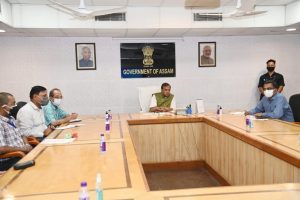Bhaskarabda: A Luni-Solar Calendar:

The Assam Government has announced that Bhaskarabda, a Luni-Solar Calendar will be used as an official calendar.
- Presently, the official calendar of Assam government makes use of the Saka calendar and the Gregorian calendar.
- However, the Bhaskarabda calendar will also be used from now onwards.
- Bhaskarabda, an era counted from the date of the ascension of a 7th-century local ruler Bhaskar Varman.
- It is based on both the phases of the moon and the solar year.
- It began when Bhaskaravarman was crowned ruler of the Kamrupa kingdom.
- He was a contemporary and political ally of northern Indian ruler Harshavardhana.
- The gap between Bhaskarabda and Gregorian is 593 years.
Type of Calendars:
- Solar: Any dating system based on the seasonal year of approximately 365 1/4 days, the time it takes the Earth to revolve once around the Sun.
- Lunar: Any dating system based on a year consisting of synodic months—i.e., complete cycles of phases of the Moon.
- Luni-Solar: In the lunisolar calendar months are lunar but years are solar, it was used in the early civilizations of the whole Middle East and in Greece.
Bhaskarvarman (600–650):
- He belonged to the Varman dynasty and was the ruler of Kamarupa Kingdom.
- Kamarupa was one of the most advanced kingdoms in India under Bhaskaravarman. Kamarupa was the first historical kingdom of Assam.
- His name has been immortalised in the accounts of the Chinese Buddhist pilgrim, Xuanzang, who visited Kamarupa during his reign.
- He is known for his alliance with Harshavardhana against Shashanka, the first major ruler of Bengal (Karnasuvarna).




